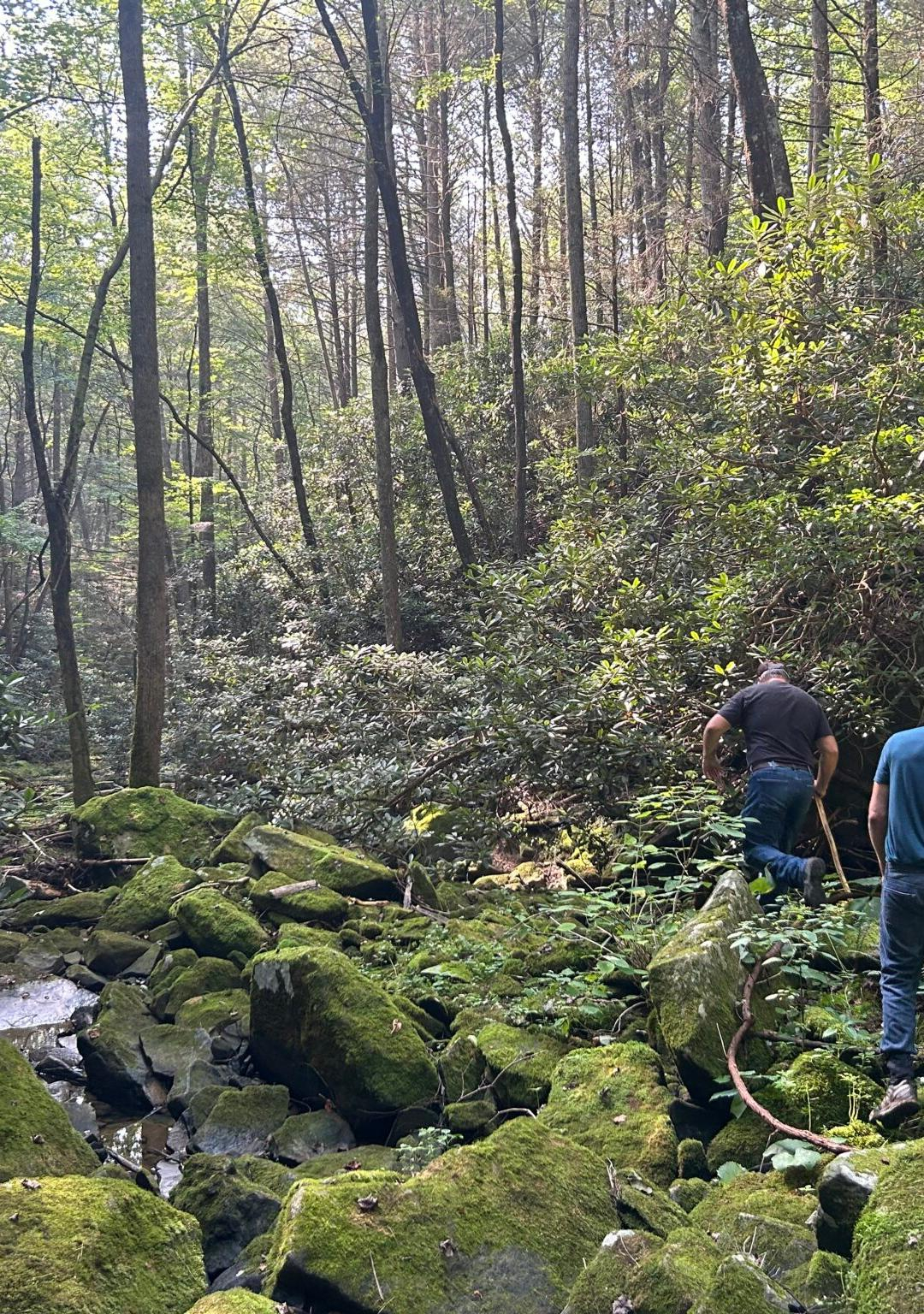Displaying items by tag: kayaking
Land donation protects Obed-area wildlands on eastern fringes of Cumberland Plateau
 Hikers walk along Ramsey Creek during a dry time. Tennessee Citizens for Wilderness Planning has assembled land to be turned over to the National Park Service to expand public lands at the Obed Wild and Scenic River. Chuck Estes/Tennessee Citizens for Wilderness Planning
Hikers walk along Ramsey Creek during a dry time. Tennessee Citizens for Wilderness Planning has assembled land to be turned over to the National Park Service to expand public lands at the Obed Wild and Scenic River. Chuck Estes/Tennessee Citizens for Wilderness Planning
There’s more room to roam in the Cumberlands thanks to Oak Ridge-based citizens group
WARTBURG — As East Tennesseans and tourists alike enjoy summer fun on the wild Obed River, enthusiasts are growing its amount of federally protected land.
Part of the U.S. National Park Service system, the Obed Wild and Scenic River in Cumberland and Morgan Counties on Tennessee’s Cumberland Plateau offers swimming, hiking, picnicking, kayaking, fishing and climbing at the federally protected park. It currently includes about 45 miles along streams like the Obed and Emory Rivers.
Residents of Oak Ridge, a little less than an hour’s drive away, created Tennessee Citizens for Wilderness Planning (TCWP) and lobbied to create the federally protected area in 1976. Now, the same group, through fundraising and land swaps with anonymous private individuals, has gained 30 acres on which it plans to build a trail connected to the federal land.
- obed national wild and scenic river
- tennessee citizens for wilderness planning
- tennessee land preservation
- cumberland mountain quail
- cumberland plateau
- cumberland hiking
- new hiking trails in east tennessee
- hiking in tennessee
- recreation
- fishing
- kayaking
- climbing
- ramsey creek
- national park service
- hellbender
- citizen action
Updated: Smokies crews recover drowned Knoxville kayaker
TOWNSEND — Smokies recovery teams on Monday found the body of Carl Keaney, 61, of Knoxville, in the Little River.
Keaney was last seen kayaking the Sinks during high flow when he vanished under water, prompting calls to Great Smoky Mountains National Park rangers who, along with other local crews, proceeded to search for his body for three days.
Here’s the previous Hellbender Press report:
Teams are searching for a missing kayaker in what Great Smoky Mountains National Park officials are now calling a “recovery operation” after a 61-year-old man disappeared underwater while boating above the Sinks on Little River. High water levels from recent heavy rains are making search and recovery difficult.
“Around 3:40 p.m. on Friday, Dec. 16 Great Smoky Mountains National Park dispatch received a call that a 61-year-old man had disappeared underwater while kayaking above The Sinks and did not resurface,” according to a news release from the park.
All forward: Tennessee RiverLine paddle trail offers world-class recreation and reconnects the valley with its river heritage
RiverLine dedicates itself to recreation and retrospect on the storied Tennessee River
In many respects, the United States and Native American nations before it were carved out by paddle blades.
Rivers provided transportation, communications, sustenance and avenues for exploration. They were the genesis of cities large and small.
Americans grew apart from the rivers that watered and nurtured a modern nation, their connections cut by outward growth and industrial development along riverbanks.
Only recently have the great continental rivers again become the centerpieces of redevelopment and modern recreation. One such effort officially launched in Knoxville on May 21 aims to further connect communities in four states with their river again.
A bale of turtles watched from logs embedded in the sediment of the Tennessee River (or more precisely, Fort Loudoun Lake) at Suttree Landing Park near downtown as officials from Knoxville to Paducah, Kentucky celebrated the creation of the Tennessee RiverLine, which will establish continuous paddling, hiking and biking trails along the 652-mile length of the reservoir-regulated river.
The initial effort, which will include enhanced launch and takeout sites, signage and navigational aids, 60 publicly available kayaks, campground enhancement, and publicity, is largely funded by a $400,000 investment shared between the University of Tennessee and Tennessee Valley Authority. The National Park Service is also a partner in the project.
Seventeen private and public groups of the RiverLine Partnership are committed to furthering the development of the trail, including the Nature Conservancy. Other supporters include Muscle Shoals National Heritage Area and the Tennessee Aquarium in Chattanooga.
“These partners have brought so much to the city of Knoxville,” said Mayor Indya Kincannon specifically of UT and TVA during her public remarks at the well-choreographed event in the well-groomed park with the downtown skyline visible under a clear, blue sky to the northwest.
“The Tennessee RiverLine is a continuation of our vision for what makes a healthy city: (which includes) parks and recreation,” she said, also touting the economic, therapeutic and spiritual benefits of ready access to outdoor recreation.
“During this past year, we’ve had a really hard time, dealing with the pandemic, and one thing that has helped me, and so many members of this community, is being able to be outside: being on the river, being in our parks,” Kincannon said.
“That has helped us get through some challenging times, and that’s going to help us into the future.”